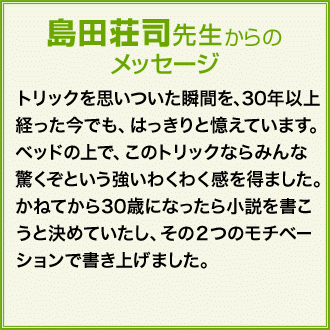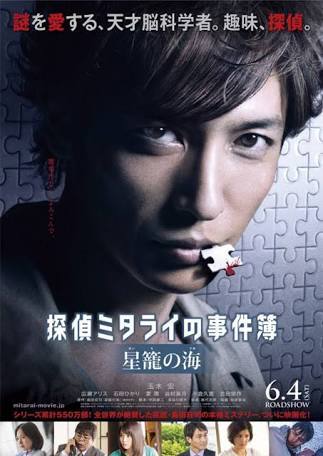What do you think?
Rate this book


252 pages, Hardcover
First published December 1, 1981
Following the terminology of alchemy, I shall call her Azoth, which means “From A to Z” – the ultimate creation, the universal life force. She fulfil my dreams completely.To create his perfect woman, he requires 6 different body parts: the head, the chest, the abdomen, the hips, the thighs and the lower legs, each must come from a different woman.

More than 30 years have passed since the moment I thought of the trick, but I still remember it clear as day. I was lying on the bed, overwhelmed with excitement at how everyone would be shocked by it. Meanwhile it had been my resolution to write a novel once I turn 30; thus driven by these two motivations, I wrote this.
Soji Shimada


"Gentle Reader,
Unusual as it may be for the author to intrude into the proceedings like this, there is something I should like to say at this point.
All of the information required to solve the mystery is now in your hands, and, in fact, the crucial hint has been provided already. I wonder if you noticed it? My greatest fear is that I might already have told you too much about the case! But I dared to do that both for the sake of fairness of the game, and, of course, to provide you with a little help.
Let me throw down the gauntlet: I challenge you to solve the mystery before the final chapters!
And I wish you luck.
Yours sincerely,
Soji Shimada"
[Soji Shimada, author of The Tokyo Zodiac Murders. Photograph: Mark Yu.]
"You know, watching the movement of the planets every day makes you realize how small and insignificant our daily lives are. We argue. We fight. We struggle. We compete to increase our wealth. Look at the universe. Its movement is so dynamic, like a huge clock. The earth is just a cog in the gears of the clock, and humans make no more difference than bacteria do."The Tokyo Zodiac Murders is the first installment of the Kiyoshi Mitarai books and uses the classic locked-room trope in a murder mystery.